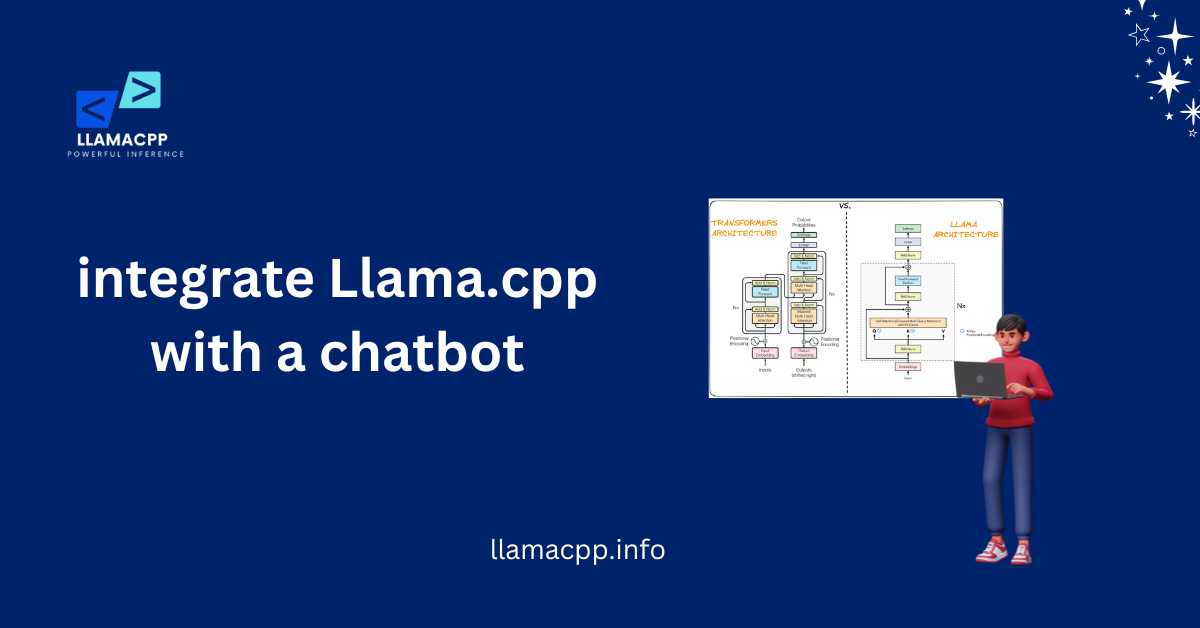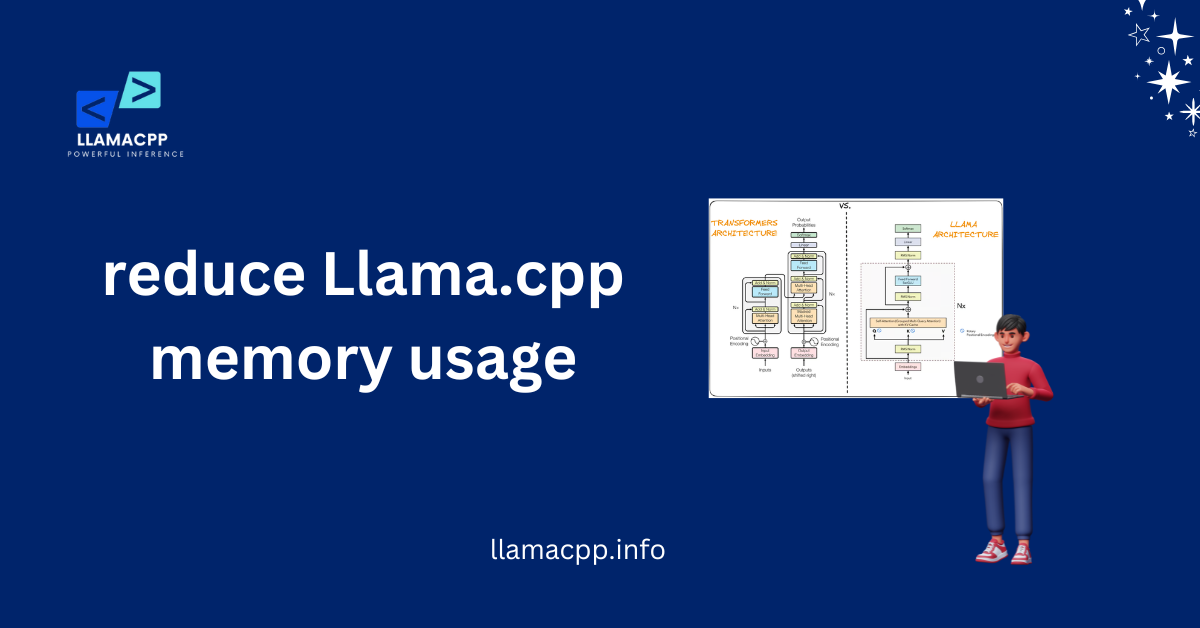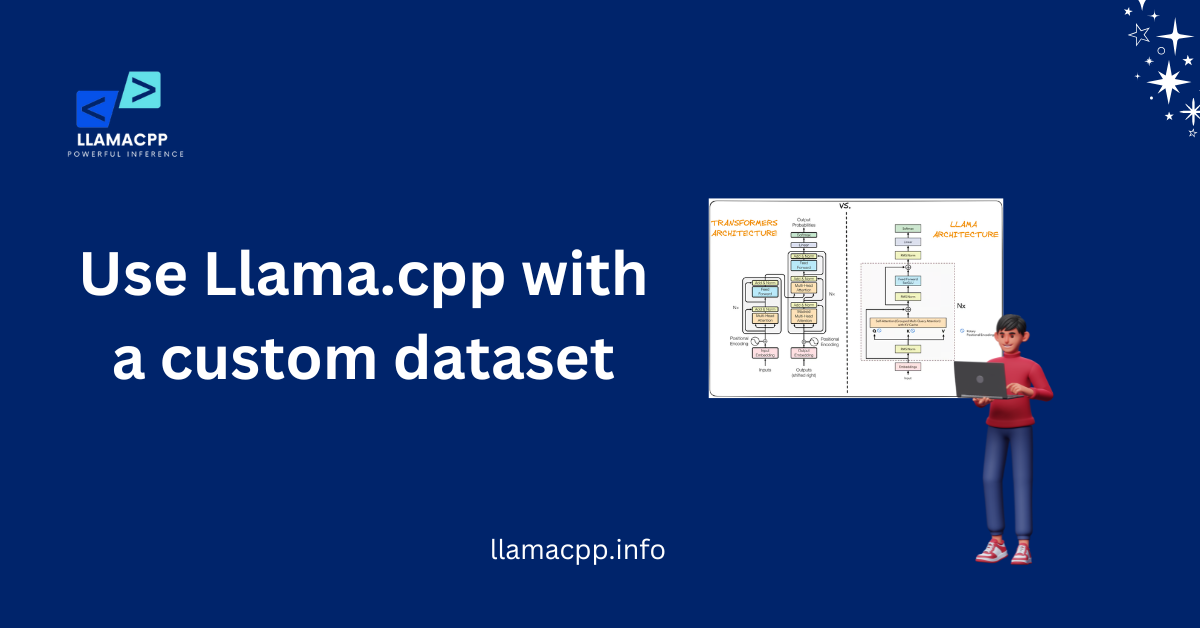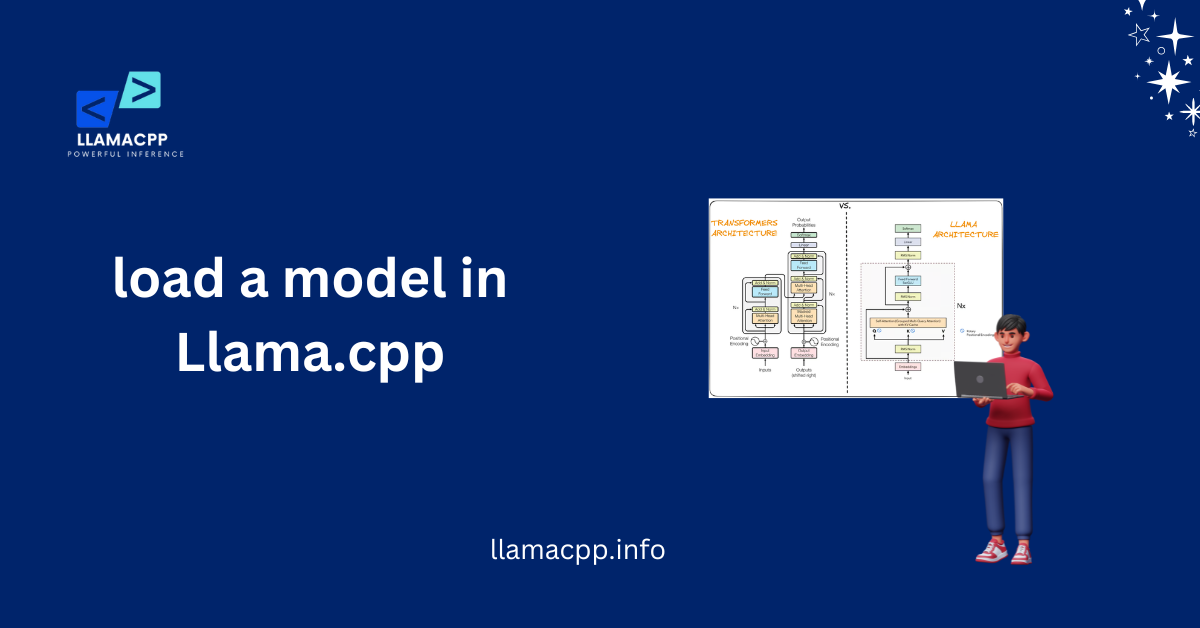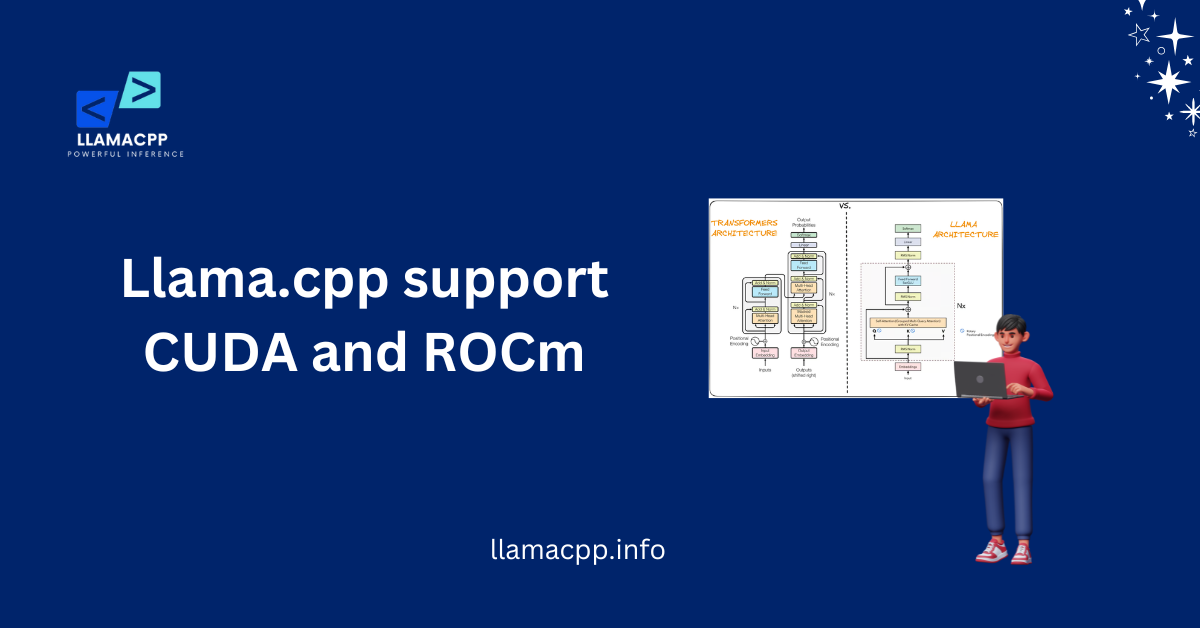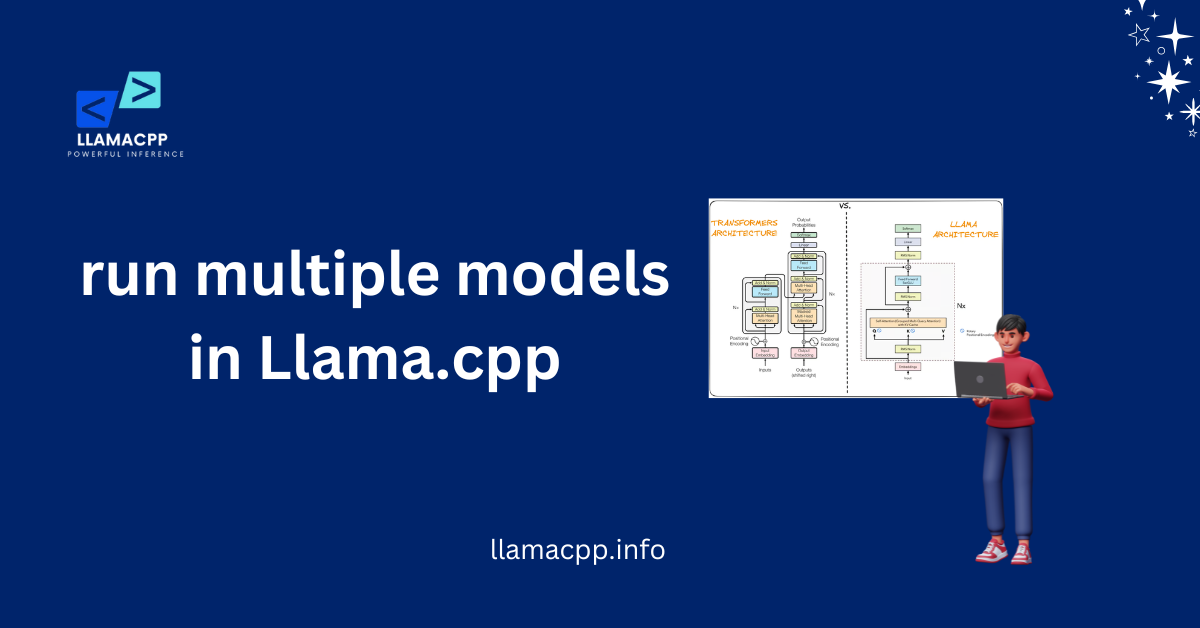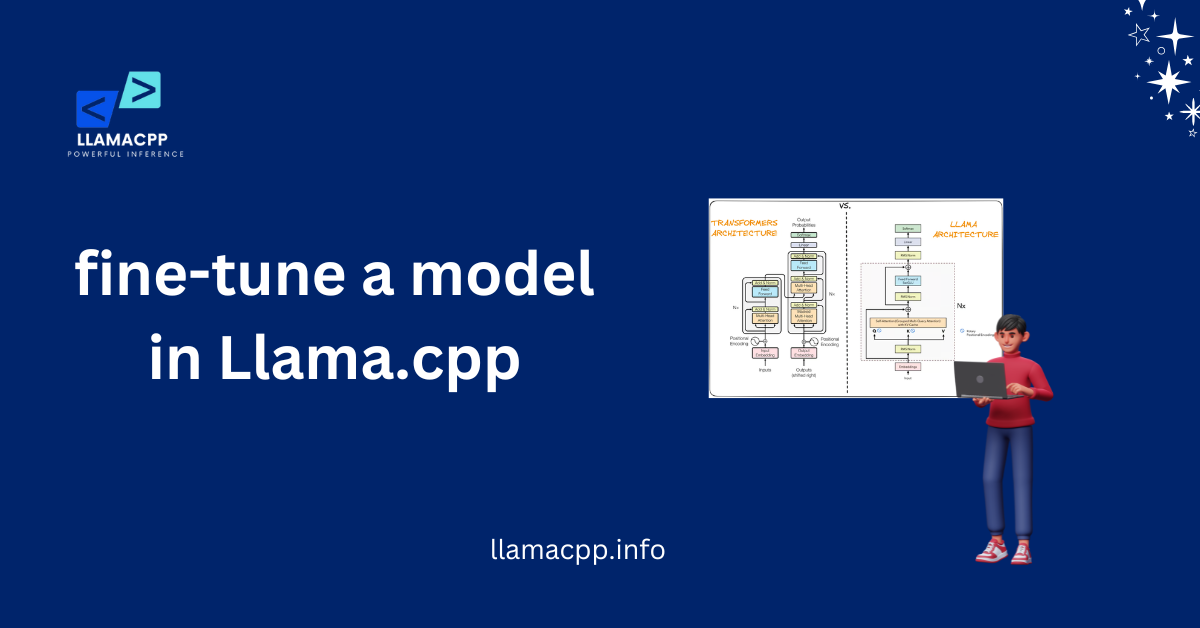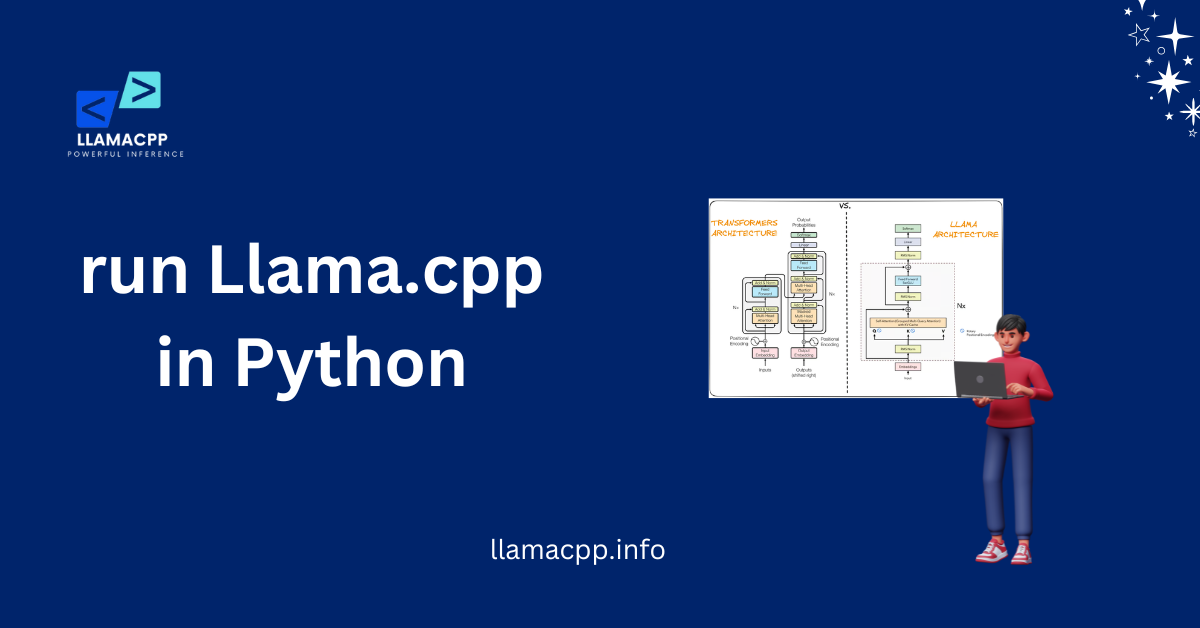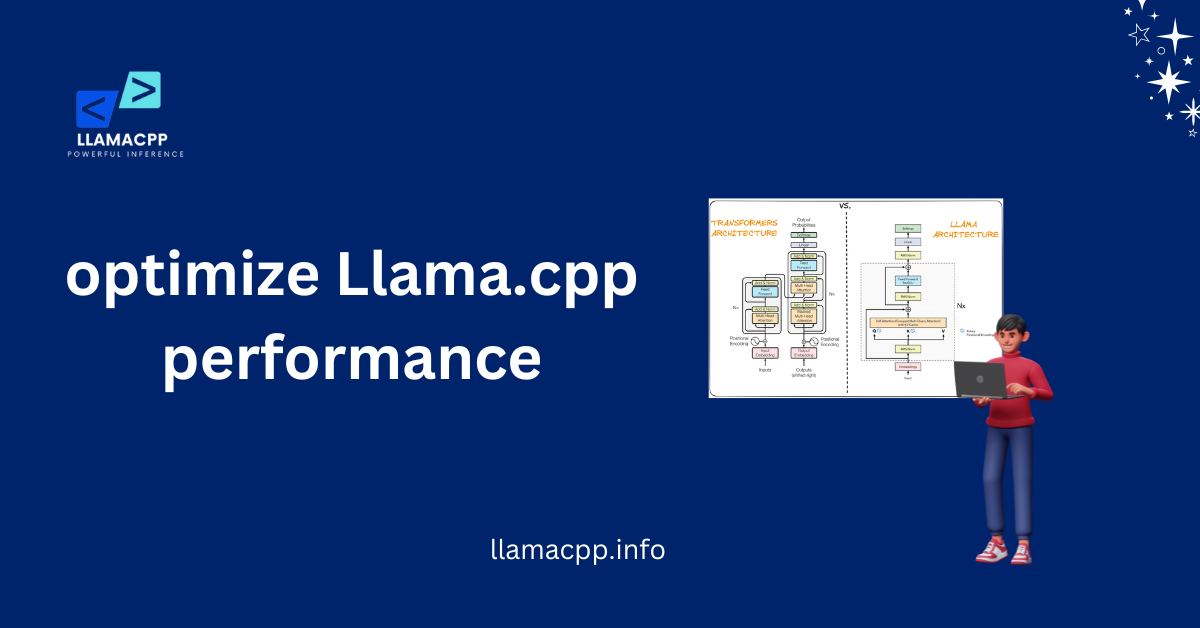Table of Contents
ToggleIntroduction
When you connect integrate Llama.cpp with a chatbot, it can do even better. The powerful Llama.cpp library makes robots more innovative, faster, and better at what they do. Because robots are becoming more common, it’s more important than ever to have one that stands out. That’s precisely what Llama.cpp can do for your Chatbot: give quick, correct, and helpful answers.
You can load a model in Llama.cpp to your Chatbot by following the steps in this guide. This post will help you understand how the interface works and why it’s so helpful, no matter how much you know about chatbots. You will realize how Llama.cpp can really boost your robot and make it more useful than ever by the end.
What is Llama.cpp?
- Llama.cpp is an open source tool designed to run and fine tune large AI language models efficiently.
- It supports both CPU and GPU execution, enabling faster inference and better performance.
- The tool allows customization for specific datasets, tasks, and hardware configurations.
Essential Things About Llama.cpp
- Llama.cpp is an open source tool designed for running and fine tuning AI models efficiently.
- Supports both CPU and GPU for faster inference and better performance.
- Allows customization to fit specific datasets, tasks, or hardware setups.
- Provides memory and performance optimization techniques for handling large models.

Works on a Lot of Platforms
Llama.cpp can be used with many different systems. It works well with programming languages like Python and C++. No matter what platform you’re using, you can easily integrate Llama.cpp with a chatbot and get it up and running in no time.
Why should you connect Llama.cpp to a chatbot?
- Enables real time AI responses by leveraging Llama.cpp’s inference capabilities.
- Allows customization of chatbot behavior based on specific datasets or user requirements.
- Improves performance and efficiency by utilizing GPU or CPU acceleration.
- Facilitates testing and fine tuning of conversational models for better user interaction.
- Supports integration with different platforms and applications for versatile chatbot deployment.
Prerequisites for Integration
Before you integrate Llama.cpp with a chatbot, there are a few things you need to have in place. To begin, you will need the right tools and apps. You should have a general understanding of programming languages like Python or C++. That’s what most people use to integrate Llama.cpp with a chatbot. It will be easier and faster to integrate if you know the basics.
You will also need to set up your chatbot platform. Whether you use an existing system or start from scratch, you need a chatbot that works. Once you have everything set up, you can easily integrate Llama.cpp with a chatbot and enjoy its benefits.
1. Know how of programming
You need to know how to write to integrate Llama.cpp with a chatbot. It will be easier to work with Llama.cpp if you know how to use languages like Python or C++. You should learn these languages to make your robot do what you want it to do.
If you know how to code, you can make changes and fix any issues that may arise during merging. Without the skills, you might struggle with using Llama.cpp to its full potential.
2. Setting up a chatbot platform
Before you start the connection process, you also need to set up your chatbot platform. Getting your bot up and running is essential whether you use a popular platform like Dialogflow or start from scratch and build your own. The Chatbot needs to be functional so that you can integrate Llama.cpp with a chatbot effectively.
First, you must set up the platform to connect to Llama.cpp. Here, you’ll see how simple it is to integrate Llama.cpp with a chatbot to make it work better.
3. Putting Llam .cpp in place
You need to install Llama.cpp on your machine before you can use it with a chatbot. To do this, download the right version and follow the installation steps. Make sure the system is ready for installation and that you have the correct permissions to install it.
Once your chatbot platform has been set up, you can Llama.cpp support CUDA and ROCm to it. From there, you can begin improving your bot’s intelligence and speed.
How to Connect Llama.cpp to Chatbot, Step by Step
- Install Llama.cpp and ensure all dependencies like Python, CMake, and GPU drivers are properly set up.
- Download or prepare the model you want to use with your chatbot and place it in the correct directory.
- Open your terminal or command prompt and navigate to the Llama.cpp project folder.
- Use the appropriate command line flags (
--gpu,--use-cublas, or--use-rocm) to enable hardware acceleration. - Configure the chatbot interface or API to send input queries to Llama.cpp for processing.
- Test the connection by sending sample queries and verifying the responses.
- Adjust model parameters like batch size, context length, and precision to optimize performance.
- Monitor system resources and logs to ensure stable and efficient operation of the chatbot.
3. Connect your Chatbot to Llama.cpp
The fun part is now! To integrate Llama.cpp with a chatbot, you’ll need to call Llama. Cpp’s functions from inside the code of your Chatbot. You can use the APIs or libraries that Llama.cpp gives you to do this. Do this step slowly because you want to make sure that everything fits together nicely.
Once everything is set up, test your robot. Your bot should be able to respond faster and give you more correct answers. If everything is working right, congratulations! You’ve successfully fully integrate Llama.cpp with a chatbot.
Taking Care of Data Flow Which is Better: Llama.cpp or Chatbot
Managing the flow of data is essential for making sure that Llama.cpp and a chatbot can talk to each other appropriately. Llama.cpp p cesses data and sends it back to the Chatbot, allowing the bot to respond effectively. Setting it right is important because the flow of data is what makes the bot better and faster.
The Chatbot’s system and Llama.cpp must be able to easily share data. This way, your Chatbot can use the data it gets to make better choices. Let’s break down how to handle data flow to ensure everything works smoothly.
1. Sending input from the user to Llama.cpp
- Capture user input from the chatbot interface or application.
- Format the input according to Llama.cpp’s requirements for processing.
- Send the formatted input to Llama.cpp using the configured API or command line interface.
2. Getting data from Llama.cpp and processing it
- Receive the output generated by Llama.cpp in response to user input.
- Process and format the data as needed for display in the chatbot interface.
- Apply any additional logic or filters to ensure the response is relevant and appropriate.
3. Handling Dat in Real Time
- Stream input and output between the chatbot and Llama.cpp without delays.
- Use asynchronous processing to manage multiple user queries simultaneously.
- Ensure proper error handling to prevent crashes or slowdowns during real time interactions.
Testing the integration and fixing bugs
After you’ve integrate Llama.cpp with a chatbot, it’s time to try to fix the system. This step is essential to ensure everything works as expected. Testing will catch any mistakes, while debugging will allow you to fix any issues that come up. When this is done, you’ll have a chatbot that works perfectly, thanks to Llama.cpp.
Wait as long as possible to start testing. Bug fixing and testing will ensure that your integration goes smoothly and that your Chatbot works well.
1. Test how the Chatbot answers
When you integrate Llama.cpp with a chatbot, the first thing you should do is see how well the chatbot answers. Interact with the Chatbot by asking different questions and observing its replies. Does it understand the human input? Are the answers accurate?
If the Chatbot gives wrong answers or doesn’t understand what is being said, there may be a problem with the data flow or how Llama.cpp is handling the information. Testing different scenarios will help you spot where things are going wrong.
2. Fix problems with integration
If you find that something isn’t working right after testing, it’s time to fix it. Make sure that Llama.cpp and your chatbot platform can talk to each other. Review the c de and make sure the data is flowing correctly between the two.
Format mismatches, wrong API calls, or contact delays are all common problems. By debugging these problems, you can ensure that the integration between Llama.cpp and your Chatbot works smoothly
3. Get the best results
After resolving any bugs, it’s essential to optimize the system for speed. Once you have added Llama.cpp to a chatbot, see how fast it replies. Slow replies can frustrate users, so look for ways to speed up data flow and processing times.
To improve speed, you need to fix bugs in the code or make the system faster so it can handle more requests at once. Your users will have a better time with a robot that works quickly and smoothly.
Improving how well the Chatbot works
- Continuously fine tune Llama.cpp models with updated and relevant datasets.
- Adjust model parameters such as context length, batch size, and precision for optimal responses.
- Implement response filtering and ranking to ensure accurate and coherent answers.
- Monitor user interactions to identify and correct recurring errors or misunderstandings.
- Integrate GPU acceleration to reduce latency and speed up response times.
- Test different conversational flows and prompts to enhance user experience and engagement.
1. Make response times faster
Your Chatbot’s speed is the first thing people notice. After you create Llama.cpp with a chatbot, you should focus on reducing response times. People like it better when things respond quickly.
Optimizing the backend code, minimizing unnecessary steps, or using faster data processing methods can improve reaction times. The goal is to get the information from Llama.cpp to the robot as quickly as possible.
2. Get better at handling data
Handling data efficiently is a key part of improving efficiency. When you connect Llama.cpp to a chatbot, the Chatbot must be able to send and receive data from Llama.cpp without any delays. Any problem with the flow of data can make the whole process take longer.
To get the most out of data handling, ensure it is structured correctly and that the system can handle many calls at once. Using lightweight data formats like JSON can speed up the process, lower lag, and improve performance.
3. Watch and make small changes
It’s essential to monitor the system’s speed even after you’ve optimized it. Use tracking tools to track the Chatbot’s performance and look for ways to improve. Monitoring lets you see any slowdowns or possible problems right away.
Adjust the method based on users’ comments and how well it works. Continuous testing will help keep things running smoothly and ensure that your Chatbot continues to work well over time.
Conclusion
Integrating Llama.cpp with a chatbot can transform how your bot interacts with users, making it more innovative and more efficient. By following the steps above, you can ensure that your Chatbot is ready to handle real-world jobs, from learning how to integrate it to making it run at its best.
Remember that testing, fixing bugs, and making small changes are essential for making sure your interface works flawlessly. It doesn’t take much work to make a robot that answers quickly, correctly, and efficiently, giving users a great experience. When you use Llama.cpp, you’re not just adding a tool; you’re also opening the door to a robot that can really interact with and help your users!
FAQs
1. What is Llam .cpp, and how does it connect to a chatbot?
This is a tool called Llama.cpp that helps chatbots learn and answer better. When you add Llama.cpp to a chatbot, it makes the Chatbot better and faster at reading text. This allows the Chatbot to answer people more quickly and correctly.
2. Why should I integrate Llama.cpp with my Chatbot?
If you add Llama.cpp to your Chatbot, it will run faster and give better answers. It will also be better at handling what users type, which will make talks go more smoothly. This will make the Chatbot better and more helpful.
3. What are the most important things that need to be done in order for Llama.cpp to work with a chatbot?
To integrate Llama.cpp with a chatbot, you’ll need basic coding knowledge, access to a chatbot platform, and a working version of Llama.cpp. Make sure your conversation platform is ready to use API or code to connect to Llama.cpp.
4. After I connect ct Llama.cpp to my robot, how can I test the integration?
If you connect Llama.cpp to a chatbot, you can ask the bot questions to test it. See how far the bot can answer the right questions. If something is wrong, check the code and fix any issues with the way the data flows or the API link.
5. Will making peed better make my Chatbot go faster?
Yes, improving the speed of your Chatbot can make it go faster. Once you’ve connected Llama.cpp to a chatbot, work on making it faster and better at handling data. This will help the chatbot answer quickly, making it more efficient and user-friendly.

